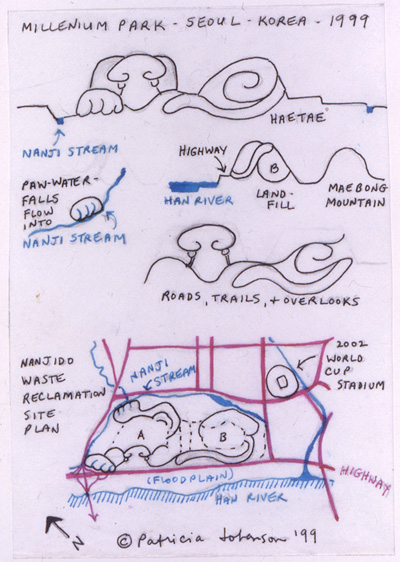
Nanjido, originally a small island in the Han River, served as a dumpsite for the city of Seoul from 1978 to 1990. Now over ninety meters high, the landfill dwarfs the new World Cup Soccer Stadium, the polluted Nanji Stream, and an eight-lane highway at its base. In 1999 the Seoul Development Institute assembled an international team to consider the sustainable development of the dumpsite and transform it into "Millenium Park".
During the Choson Dynasty haetae, mythical animals that ward off evil were often installed near bridges and buildings. These carved stone sculptures with their crouching stance and bulging eyes often emerge unexpectedly from the landscape, just as Nanjido appears without warning, overshadowing the sacred mountains behind it. The landfill is clearly man-made, and offers the possibility of both serving the public, and reestablishing ecological communities within the urban landscape.
Decorative patterning on haetae resembles traditional rice-paddy farming, the same terracing required to stabilize the landfill's slopes and create microhabitats. These terraced levels define the animal's image and serve as hiking paths, stairways, overlooks, and access roads to the twin summits, which are separated by a broad central valley resulting from the dumping process.
As Korea's newest guardian of the natural world, "Millenium Park" becomes a powerful symbol and a powerful reality of public waste transformed into public wealth.
Copyright © 1999, Patricia Johanson